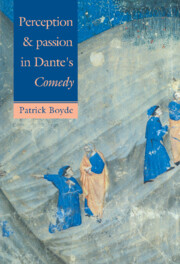Book contents
- Frontmatter
- Contents
- Preface
- PART ONE Coming to terms with Aristotle
- PART TWO The operations of the sensitive soul in man
- 5 Perception of light and colour
- 6 Perception of shape, size, number movement, and stillness
- 7 Imagining and dreaming
- 8 Body-language and the physiology of passion
- PART THREE The operations of the rational soul
- PART FOUR Combined operations
- Notes
- Select bibliography
- Index of Latin terms
- Index of longer quotations
- General index
8 - Body-language and the physiology of passion
Published online by Cambridge University Press: 14 October 2009
- Frontmatter
- Contents
- Preface
- PART ONE Coming to terms with Aristotle
- PART TWO The operations of the sensitive soul in man
- 5 Perception of light and colour
- 6 Perception of shape, size, number movement, and stillness
- 7 Imagining and dreaming
- 8 Body-language and the physiology of passion
- PART THREE The operations of the rational soul
- PART FOUR Combined operations
- Notes
- Select bibliography
- Index of Latin terms
- Index of longer quotations
- General index
Summary
Recapitulation and preview
In the final chapter of part one, we established that the senses of smell, hearing and sight are found only in animals which have the power to move themselves from place to place, and that these senses do not exist simply to supply information about the environment for its own sake, but in order to enable the animal to advance towards a distant good or to retreat from a source of harm while it is still imminent, that is, still only ‘threatening’. We also saw that the external organs of locomotion – which may be fins or wings as well as legs – are not moved directly by the combined forces of the vis apprehensive. Between seeing and moving lie the two intermediaries of the aestimativa, located in the centre of the brain, and the vis appetitiva, whose multiple operations are seated in the heart.
The power of ‘estimation’, it will be remembered, allows the animal to identify the still-remote source of the incoming image as a bonum or malum and to anticipate the sensations of pleasure or pain which would result from physical contact or ‘union’ with that source. The appetites are aroused by such anticipations and produce pleasurable or painful feelings of a special kind, commonly called ‘passions’, of which the most fundamental and familiar are hunger and thirst. A passio is simply an appetitus in actu. It manifests itself by causing a bodily change (transmutatio corporalis) involving expansion or contraction, warming or cooling, drying or moistening.
- Type
- Chapter
- Information
- Perception and Passion in Dante's Comedy , pp. 140 - 170Publisher: Cambridge University PressPrint publication year: 1993



